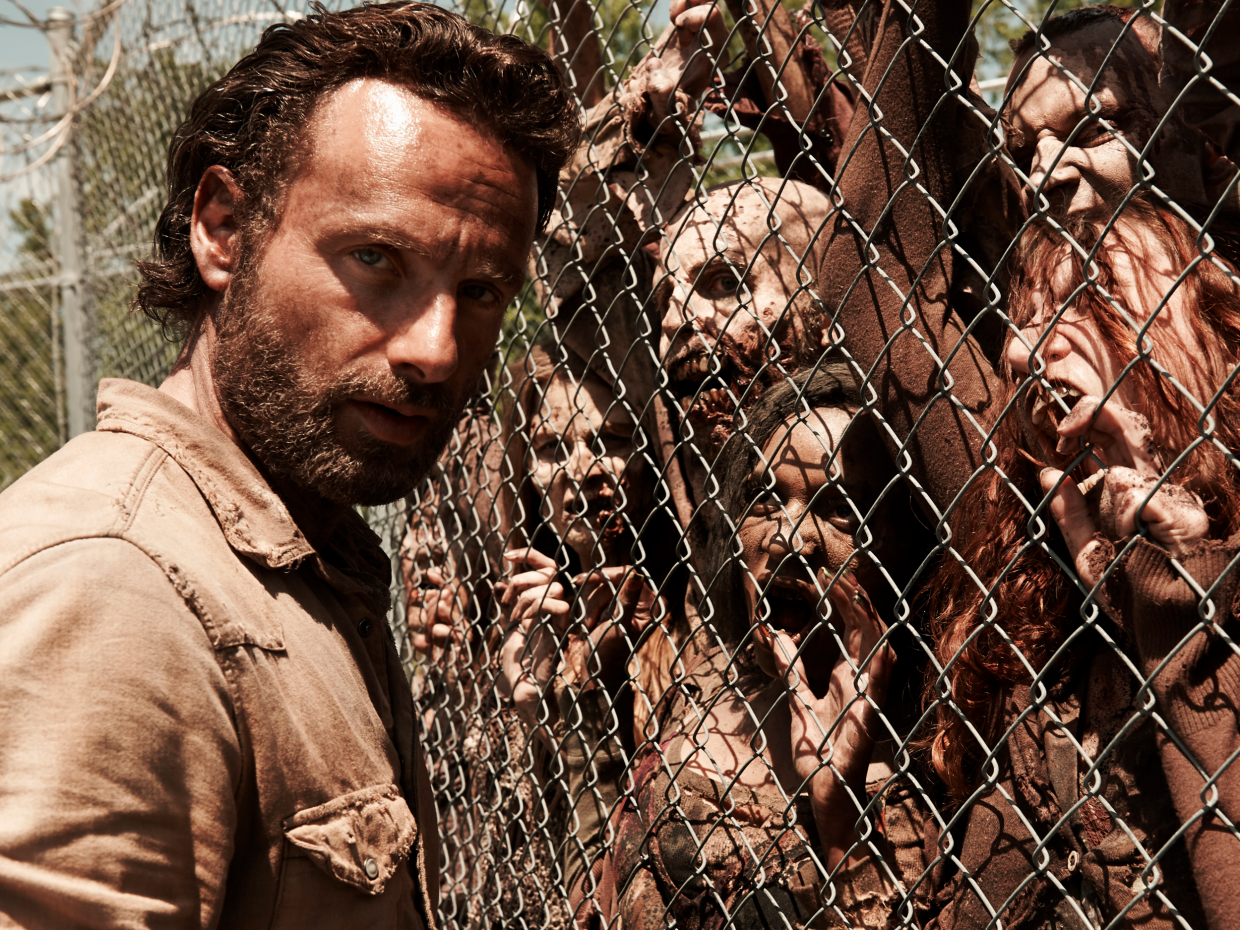If the zombie apocalypse happens, scientists say you should head for the hills
Real disease modelling can help people understand exactly how a zombie outbreak would play out - stay out of cities

Your support helps us to tell the story
From reproductive rights to climate change to Big Tech, The Independent is on the ground when the story is developing. Whether it's investigating the financials of Elon Musk's pro-Trump PAC or producing our latest documentary, 'The A Word', which shines a light on the American women fighting for reproductive rights, we know how important it is to parse out the facts from the messaging.
At such a critical moment in US history, we need reporters on the ground. Your donation allows us to keep sending journalists to speak to both sides of the story.
The Independent is trusted by Americans across the entire political spectrum. And unlike many other quality news outlets, we choose not to lock Americans out of our reporting and analysis with paywalls. We believe quality journalism should be available to everyone, paid for by those who can afford it.
Your support makes all the difference.If - or when - the zombie apocalypse comes, those of us in big cities are in trouble, according to research presented at the American Physical Society March meeting on 5 March 2015.
Starting in a big city like New York or Atlanta means you are basically screwed from the start in the event of a zombie epidemic there, according to Alex Alemi, a graduate student at Cornell University who was part of the research team.
You are much better off starting farther away from people, they say, which gives you a better chance of avoiding infection. Ideally, you'd escape to an almost empty region like the Rocky Mountains.
"I'd love to see a fictional account where most of New York City falls in a day, but upstate New York has a month or so to prepare," Alemi said in the APS press release.
Authentic disease modelling
Alemi and colleagues used standard disease models to estimate the zombie infection rate around the US, assuming humans would need to be infected by a zombie bite (of course). Also following standard protocol, zombies travel only by walking and wouldn't die naturally but would need to be "killed," presumably with a well-placed blow to the head.
Essentially, they used a realistic model that's very similar to the way epidemiologists calculate the spread of other viruses, but using fictional parameters unique to zombies. They did make some assumptions, including a transportation infrastructure collapse. It's hard to imagine airports staying operational for long in such a scenario.
The video below shows how a national outbreak would play out. The top right map, susceptible humans, shows the human population that's still able to be infected. In the green bottom right map, the "killed" zombie population grows, but as you can see in the red bottom left map, so does the infected population. The top left is a composite map of the other three.
As you can see, the Rockies are the safest place to be in this fictional scenario — sparsely populated and difficult to reach.
And big population centers are the worst place to start the outbreak. About 28 days later (coincidence?), they become safer as the areas that surround them become more dangerous.
Though of course, as Terrence McCoy pointed out at The Washington Post, if a large percentage of the population flooded any area, the risk of infection there would skyrocket.
The statistical research was inspired by a reading of Max Brooks' World War Z a book that is better than the movie that was based on it.
How it works
Alemi and coauthors modeled out the population centres of the country and then assumed certain possible interactions, with an element of randomness. A zombie might bite and infect a human or the person might escape or kill the creature. And of course, the undead shamble onward.
Also, in reality, an outbreak probably wouldn't start all over the country, and there are some variables. The undead might be more or less aggressive or more or less mobile.
So the research team built an interactive model that allows you to simulate an outbreak, picking a starting point, a zombie-bite to zombie-kill ratio, and whether the zombies are fast or slow.
A fast-zombie outbreak in New York City would be devastating within 24 hours.
Not looking good. More complex variables would be interesting, though.
"Given the time, we could attempt to add more complicated social dynamics to the simulation, such as allowing people to make a run for it, include plane flights, or have an awareness of the zombie outbreak, etc.," Alemi said in the press release.
While zombie scenarios might seem like something a bit silly for researchers to spend time on, public health researchers tend to like these sorts of scenarios since they help educate people on how diseases spread. The CDC even maintains a "Zombie Preparedness" page.
Physicists seemed to want to be prepared. The talk was reportedly standing-room only.
• 22 lessons from Stephen King on how to be a great writer
• How to outsmart any multiple-choice test
• Google responds to employee’s daughter asking for a day off
Read the original article on Business Insider UK. © 2016. Follow Business Insider UK on Twitter.
Join our commenting forum
Join thought-provoking conversations, follow other Independent readers and see their replies
Comments